Riverside Auto Center nearing 50 years
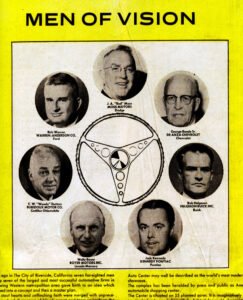
Billed as the “World’s First Auto Center,” the 1965 opening of the Riverside Auto Center transformed the car-buying landscape in America, if not the world.
What began in the early 1950s as a bold vision among three local car dealers — George Reade Sr. (Chevrolet), Charles W. “Bud” Dutton Sr. (Cadillac/Oldsmobile), and Julian Adrian “Red” Moss Sr. (Dodge) — to sell cars together as competitors within a dedicated “auto center,” would soon encompass four more dealers (Ford, Buick, Pontiac, Lincoln-Mercury), and later, spawn hundreds of copy-cat auto malls.
Needing to build larger facilities, the seven dealers realized they would have to move outside of their cramped downtown locations, which were mostly located along Market Street north of Seventh Street (Mission Inn Avenue).

“It became apparent on the late 1950s and early 1960s that many of the downtown dealers (most of them clustered on Market Street) were outgrowing their facilities and didn’t have room to expand,” (George “Cap”) Reade explained. “The idea to relocate jointly was promoted by my father (also George Reade, and also, before his death, president of De Anza Chevrolet). He was a prime mover for some time.”
Riverside Press-Enterprise – September 20, 1976
The group initially purchased 35 acres on Arlington Avenue, across from California School for the Deaf (where Target – formerly Gemco – stands today). Although zoning was approved by the Riverside Planning Commission and Riverside City Council, nearby residents strongly objected, leading to a 1962 ballot measure that overturned the Council’s decision. (According to late local historian Tom Patterson, Charles W. Dutton Jr. – son of center founder Dutton Sr. – said the defeat of the Arlington Avenue site was “a blessing in disguise” on account it would have been too small compared to the current Adams Street site.)
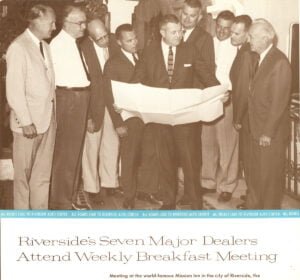
Thus, the dealers turned their eyes a few miles to the southwest, settling on 55 acres of citrus groves located just east of the 91 Freeway along Adams Street and Indiana Avenue. The cost was reportedly about $14,000 an acre.
From there, the seven original dealers received somewhat tacit approval (and semi-skeptical looks) from their respective brands for the new concept, and “drew from a hat” for sites within the center. Each dealer would own their site and build their own showrooms/parts/repair facilities, with the first to open being Kennedy Pontiac (in May 1965). The last of the original seven dealers to open was Rubidoux Motor Company, which did so just a few days prior to the center’s formal grand opening weekend of November 12-14, 1965.
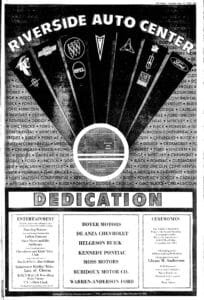
Grand Opening Dates and Locations of the Seven Original Dealers in the Riverside Auto Center
- May 22-23, 1965 — Kennedy Pontiac — 8101 Auto Drive
- August 21-22, 1965 — Helgeson Buick — 8001 Auto Drive
- September 17-19, 1965 — Boyer Motors (Lincoln-Mercury) — 8051 Auto Drive
- October 1, 1965 — Warren-Anderson Ford — 8000 Auto Drive
- November 12-14, 1965 — De Anza Chevrolet — 8200 Auto Drive
- November 12-14, 1965 — Moss Motors (Dodge) — 8151 Auto Drive
- November 12-14, 1965 — Rubidoux Motor Co (Cadillac/Olds/GMC) — 8201 Auto Drive
Note: Most dealers had soft openings prior to their individual grand opening dates; the Auto Center’s official grand opening date — with all dealers open — was November 12-14, 1965.
According to a 1996 article in the Riverside Press-Enterprise, the new auto center received mention in Business Week, wherein an unnamed General Motors executive was quoted as saying, “we don’t approve of this kind of selling,” likely referring to the cooperative assembling of competing dealers. Yet, GM did end up sending a few executives to attend the April 1965 ground breaking for De Anza Chevrolet. However, in general, it appears the Big Three automakers in Detroit initially seemed mostly indifferent, failing to fully grasp the bold concept, let alone comprehend how transforming it would become. In fact, a January 1967 Riverside Press-Enterprise article noted that total sales for all seven dealers during the Auto Center’s first full year (11/1965 – 11/1966) were $29.7 million, an increase of nearly 20 percent over the prior year’s total sales when the same dealers were located in downtown Riverside.

The original assemblage consisted only of domestic car dealers lining both sides of Auto Drive, bisected by Motor Circle and Detroit Drive. On the west side of Auto Drive near Adams Street was Rubidoux Motor Company (Cadillac/Olds), with Moss Motors (Dodge), Kennedy Pontiac, Boyer Motors (Lincoln-Mercury), and Helegeson Buick lining the street northward toward Jefferson Street. On the east side of Auto Drive were just two dealers – DeAnza Chevrolet (near Adams Street) and Warren-Anderson Ford (toward Jefferson Street).
In the center parcel between the Chevy and Ford dealers was to be the site of a planned commercial mall of sorts, some of which was built (Security Pacific Bank, Auto Lab diagnostics & car wash, car parts store, restaurant, dry cleaners, barber/hair salon, and liquor store). However, this particular concept was the only portion of the auto center to not fully materialize and today has been mostly consumed by dealer expansions and additions. The only part of the failed commercial mall concept that remains in this section today is J&M Speed Center.

And although no foreign dealers were part of the original center, two would open within five years: Volkswagen (the once famous Economotors* of EMPI** fame) in September 1966 and Toyota in August 1969, though both would be located near the Adams/Indiana intersection outside the center’s original perimeter. These would soon be followed by others — mostly foreign brands and mostly along both Indiana and Adams streets — eventually resulting in nearly every major brand being present. The first major brand addition within the original auto center itself was Riverside Chrysler-Plymouth (formerly Glenwood Motors) that relocated from downtown in September 1976 (though the Chrysler Corp. began sniffing out an Auto Center site as early as 1969).
A 1980 profile in the Riverside Press-Enterprise marking the Auto Center’s 15th year indicates the “auto mall” concept was indeed working and was considered beneficial by the majority of the competing dealers.
“When we came here from downtown we had a tremendous increase in business,” said Dodge dealer Adrian Moss. “Everybody knows where we are. We draw from a big circumference.”
Riverside Press-Enterprise – December 15, 1980
The article also touted that the Riverside Auto Center had become a model for similar centers across the nation, a proliferation that would soon challenge Riverside’s dominance.
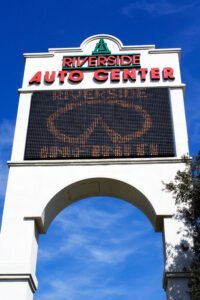
In 1987, to help spur awareness from passing motorists on nearby 91 Freeway, a portion of Adams Street near the Auto Center was renamed Adams Street/Auto Center Drive. The original plan was to completely rename a portion of Adams Street as Auto Center Drive. However, a denial from the City’s Planning Commission and objections from residents resulted in the dual Adams Street/Auto Center Drive compromise. The approval also required the auto dealers to pay the costs for updated freeway/city signage.
In 1991, in the face of growing competition from multiplying auto malls, which were siphoning some sales away from Riverside (and from the City’s sales tax coffers – $3.5 million or 15% of overall sales taxes at the time), the Riverside City Council approved a digital display signboard. Although still somewhat restrictive, the approval required a change in policy against allowing electronic/flashing/rotating message boards, which had been banned in the city since the 1970s. The new $250,000 sign was placed on Susan Street just off Indiana Avenue adjacent to the 91 Freeway. It replaced the original 75-foot tall, free-standing neon (and non-display) “Auto Center” sign that had stood since October/November 1965 on Indiana Avenue adjacent to the Mobil gas station (in the back corner of Rubidoux/Dutton Motor Company site).
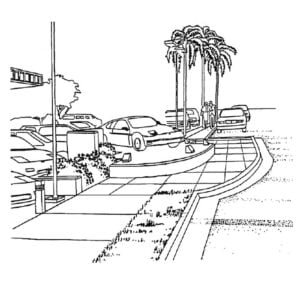
Also during the 1990s, a plan approved by the City to spruce up the center using tax dollars was met with criticism by some residents and a few of the smaller dealers. However, increasing sales tax competition spurred the City Council to approve the plan, which included uniform lighting, dealer signage, parking and landscaping. It also contained entry monument signage (using the City’s raincross symbol) and dealer “vehicle display pads” for showcasing cars, including a few located within new rotary intersections.
In 2013, the Auto Center’s freeway sign was replaced with a newly-built structure that contains a much larger, high-definition color display. (2024 UPDATE: The electronic/display portion of the 2013 sign was replaced and upgraded in 2023.)
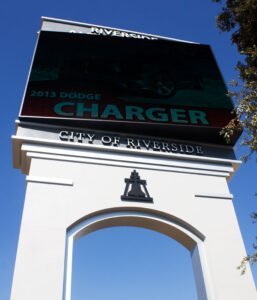
Over the years, the Riverside Auto Center would eventually grow to encompass over 100 acres, remaining one of the nation’s largest auto centers with nearly every major car manufacturer present, including later additions Acura, Audi, BMW, Datsun/Nissan, Fiat, Honda, Hyundai, Infiniti, Jaguar, Jeep, Kia, Lexus, Mazda, Mercedes-Benz, Mitsubishi, Porsche, Land Rover, Saturn, Scion, Smart Car, Sprinter, Subaru, Suzuki, Volvo, and Yugo (some makes of which no longer exist).
Today, the Riverside Auto Center offers 32 dealers/makes — including all major brands — and over 7,000 cars in one location. Also nearby is a large Harley-Davidson dealership (formerly Skip-Fordyce) as well as Riverside’s own Malcolm Smith Motorsports (of “On Any Sunday” fame) and a number of related dealers and automotive services.
As the 50th anniversary of the Riverside Auto Center nears, with hundreds of imitators scattered about the nation, it’s likely that even the seven original dealers could not have foreseen how transformative their idea would become.
Related
- Riverside Auto Center
- EMPI: A history of high performance
- Euro Motor Parts Group – EMPI history
- EMPI (official website)
- VW Trends – EMPI
- Economotors & EMPI
Riverside Auto Center – Seven Original Dealers
Images as noted courtesy of: *Pietzuch, **Wagen Werks
Correction: Updated location of original, neon “Auto Center” sign to Indiana Avenue adjacent to the Mobil gas station (in the back corner of Rubidoux/Dutton Motor Company site).
Sources: Riverside Public Library, Riverside Press-Enterprise (RDP-19650402, RIE-19650521, RIE-19650522, RDP-19650820, RDP-19650916, RIE-19651001, RIE-19651003, RDP-19651109, RDP-19651111, RDP-19660919, RDP-19670122, RDP-19681129, PE-19760920, PE-19801215, PE-19870204, PE-19871023, PE-19910821, PE-19960728, PE-19961027, PE-20130723), 1960 UCR yearbook advertisement, 1965 Riverside Auto Center booklet, City of Riverside 1990/2007 Riverside Auto Center Specific Plan
2024 PAGE UPDATE: Added additional newspaper citation/insert; added additional info on center’s opening, including opening dates and addresses of the seven original dealers; added opening info for VW, Toyota, and Chrysler; updated and removed outdated Related links; added updated photo gallery; added 2024 update.
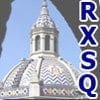

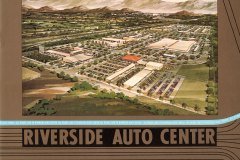
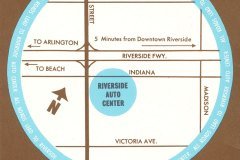
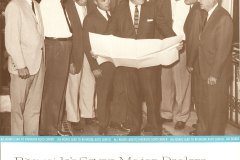
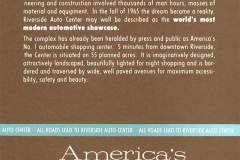
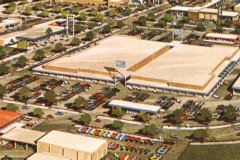
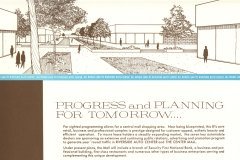
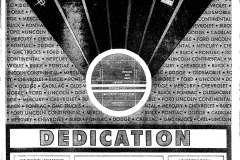
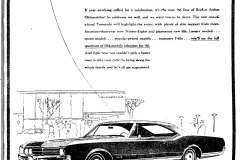
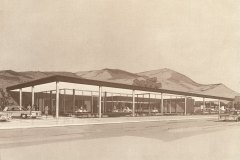
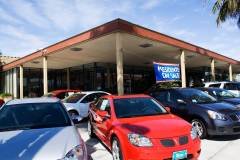

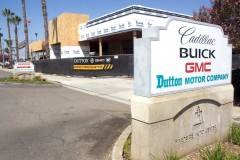
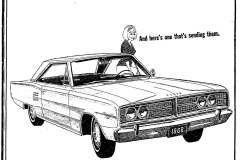
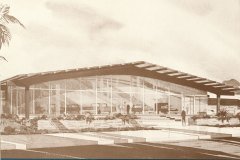
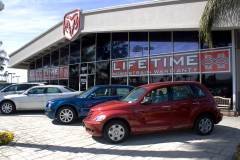
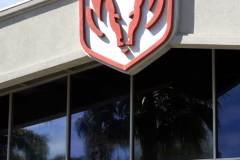
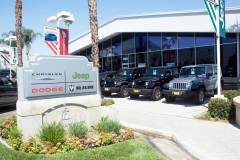
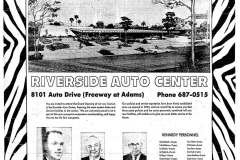
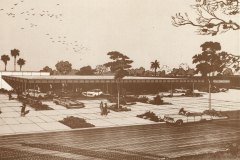
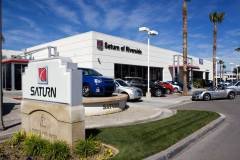
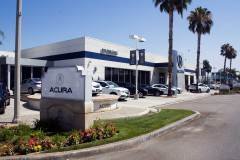
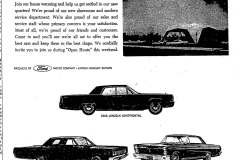
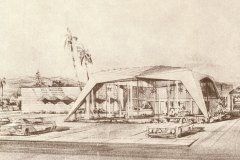
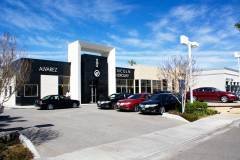
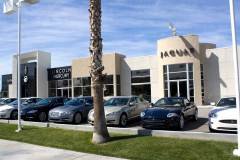
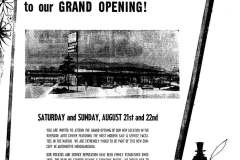
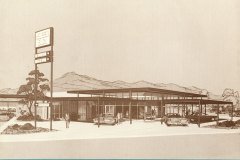
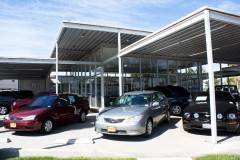
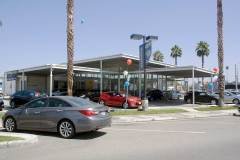
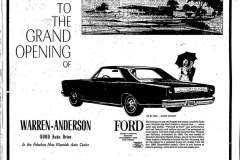
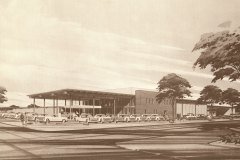
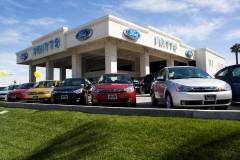
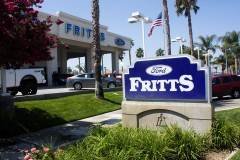
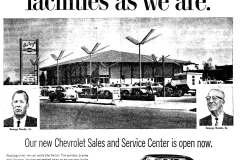
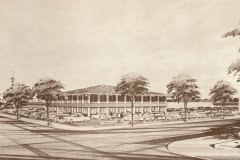
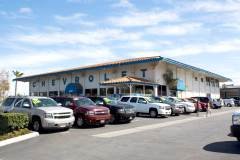
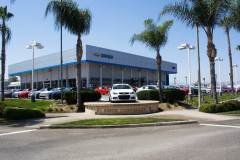
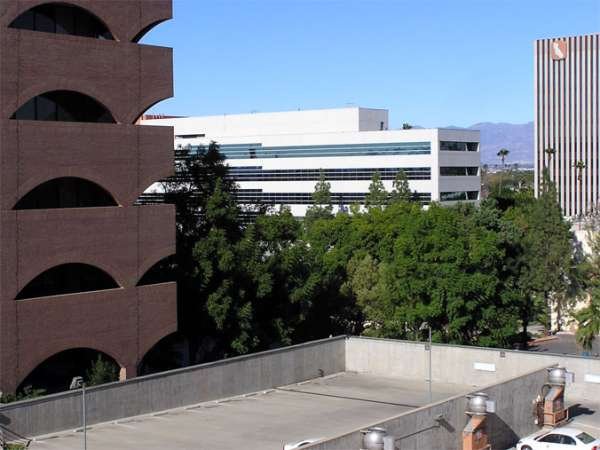
Hi, On a photograph of Helgeson Buick, it identifies Mr. Helgeson as Bob. I thought his name was Roy? Was I wrong? Just wondering because I was told that Roy owned the Buick dealership.
Good question. Remember the name Roy as well. Not sure if it’s the same person or a different family member related to the dealership.